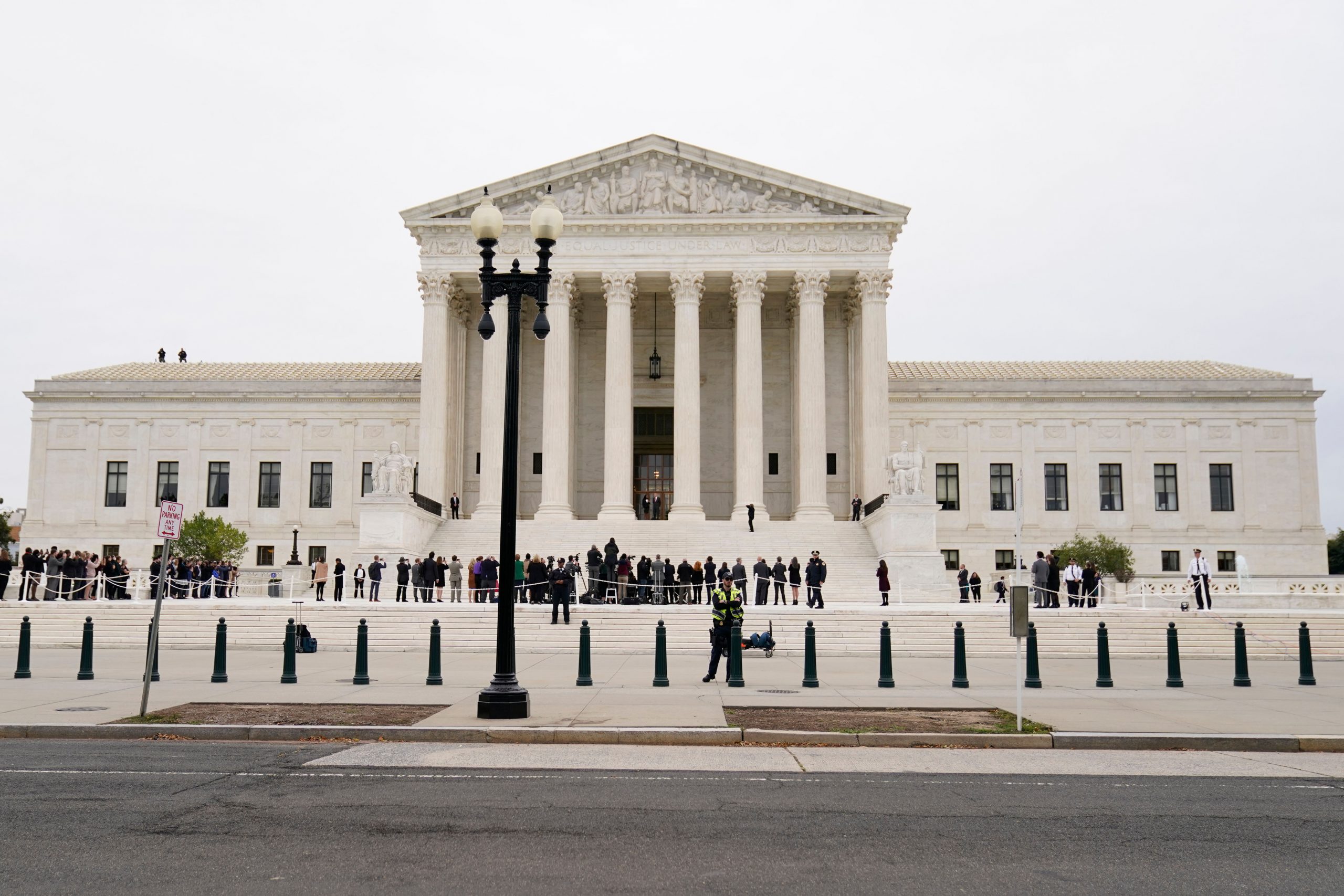When
Justice Samuel Alito’s observation on overturning the landmark US Supreme Court
judgement on abortion rights – Roe v. Wade (1973) was leaked to POLITICO, there
were questions asked of the court’s integrity. Many, including the court’s
justices, asked whether the leak signalled a deeper problem with the apex
authority’s institutional legitimacy in the public eye. Nearly three months
have passed since the Court ended federal abortion rights and left it to states
to decide on how they seek to control women’s bodies, but the Supreme Court’s
troubles have hardly ebbed.
It’s not
enough that political observers find the current US Supreme Court the most
ideologically divided. But the judicial guardian’s authority in the public eye
seems to have taken a beating.
“When
courts become extensions of the political process, when people see them as
extensions of the political process, when people see them as trying to impose
personal preferences on a society irrespective of the law, that’s when there’s
a problem – and that’s when there ought to be a problem.”
The remark
above was not made by a layman, the media or a political scientist. But by Elena
Kagan, associate justice of the US Supreme Court when she spoke at Northwestern.
And this is not the first time that Kagan has taken a public position on the
Supreme Court’s recent orientation. POLITICO reports that Kagan has made
similar comments in at least four speaking engagements recently.
But the
associate justice’s comments are not without counter. Which, while reigning in
the hopelessness also points to the deep divide within the august institution.
Justice Samuel
Alito, the man whose draft opinion in many ways transformed how American women
dealt with their bodies, has been critical of such views. Speaking to The Wall
Street Journal recently, he said, “It goes without saying that everyone is free
to express disagreement with our decisions and criticise our reasoning as they
see fit. But saying or implying that the court is becoming an illegitimate
institution or questioning our integrity crosses an important line.”
Kagan’s
views have also been countered by John Roberts, the Chief Justice of the US
Supreme Court. Justice Roberts, speaking at a conference in Colorado recently,
said: “I don’t understand the connection between opinions people disagree with
and the legitimacy of the court. Simply because people disagree with an opinion
is not a basis for questioning the legitimacy of the court.” He did not, of
course, refer to Kagan by name.
The
discussion and debate surrounding the US Supreme Court’s legitimacy is not a
new one. Fareed Zakaria, in an op-ed for CNN, wrote: “The Court’s approval
rating, one rough measure of legitimacy, has been declining for decades. And it
went down sharply after Bush v. Gore. That was a nakedly partisan ruling in
which conservatives, who had long championed states’ rights, suddenly
discovered that the federal government had a crucial role in the 2000 election.”
Zakaria,
the Indian-American journalist, writes that one of the reasons why it’s
critical for the Supreme Court to maintain its aura of legitimacy is because
the Court “cannot enforce any of its rulings. It relies on the other branches (of
government) and the public to accept them.”
And it is
in this acceptance where there now appear questions.
Supreme
Court justices are currently under much tighter security that in previous
years, POLITICO says. The justices are under 24-hour guard at their homes as
they continue to see protests over their Roe v. Wade ruling. While some justices
feel this is a bit of an overkill, there are others who have complained that
the protection is often lax and ham-handed, the POLITICO report states.
Threats to
Supreme Court justices have already proved real. Earlier this year, a man named
Nicholas John Roske, was charged with attempting to murder Justice Brett
Kavanaugh. An FBI affidavit says the 26-year-old Roske had flown in to
California from Washington with a pistol, ammo clips and burglary tools intent
on killing Justice Kavanaugh. He reportedly told law enforcement that he was
enraged over the Supreme Court’s opinion on abortion rights.
On Friday,
as Justice Ketanji Brown Jackson was officially seated in the US Supreme Court
in a historic moment, for she is the first Black woman justice of the institution,
a worrying undercurrent cast a shadow over the very legitimate celebrations.
A Gallup
poll recently found that less than half of adult Americans have a great deal or
fair share of trust in the judicial branch of the US government headed by the
Supreme Court. This too was historic because it’s the worst poll to come out of
Gallup since Gallup polls began in 1935. The previous lowest was 53%.
A New York
Times editorial published October 1, 2022 says the Court’s legitimacy has been
squandered by partisan interests. In a jarring critique of the Supreme Court’s
functioning, the editorial states: “…the court has unmoored itself from both
the Constitution it is sworn to protect and the American people it is privileged
to serve.”
“This could
not be happening at a worse moment. Election deniers in the Republican Party
are undermining the integrity of the American electoral system. Right-wing
political violence is a present and growing threat,” it says.
It’s not only
the abortion decision that has led to the trust in the Supreme Court to take
such a beating. Numerous recent rulings have been criticised for allegedly
being partisan and aligning to Conservative interests, including those on guns,
religious liberty and the environment. More recently, news that Justice
Clarence Thomas’ wife Ginni Thomas believes that the 2020 presidential
elections were stolen, a claim she is said to have repeated while testifying
before the House Select Committee probing the January 6, 2021 Capitol Hill
riots has further worked to undercut trust.
But for an
eternal optimist, there remains a silver lining in the ever-darkening clouds.
That the US Supreme Court is not going to turn the country into a ‘reactionary
juristocracy’ as the New York Times editorial says is evidenced by the fact
that the Court’s rulings are not in harmony. The disharmony is within the
ranks. And a system that recognises disharmony within itself and attempts to
resolve them is a resolute system. Finally, the future of the Court will not
only determine the judiciary’s legitimacy among the American public, but the
way American democracy is seen across the world, but more importantly to
American citizens.







